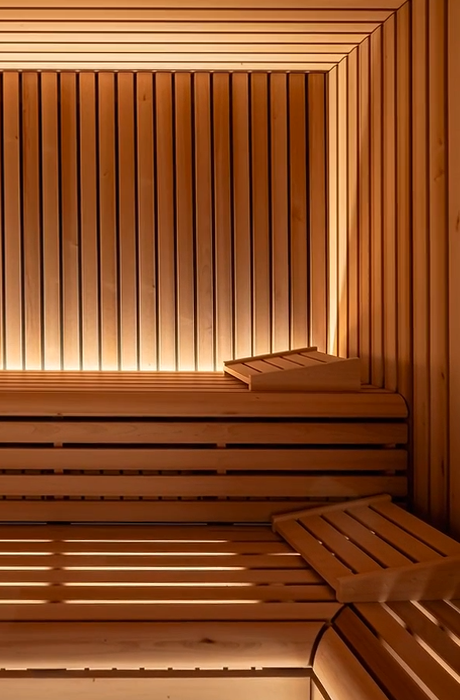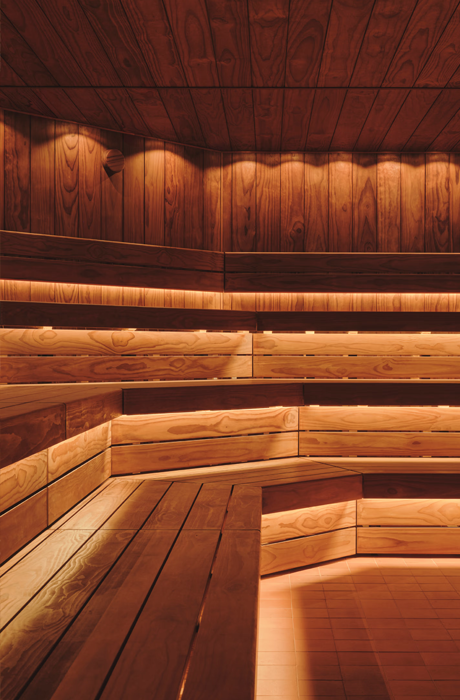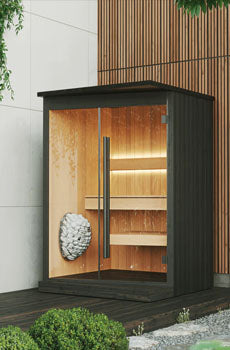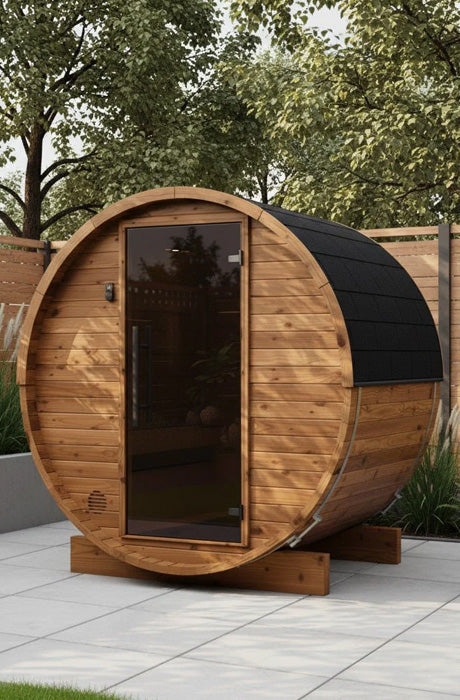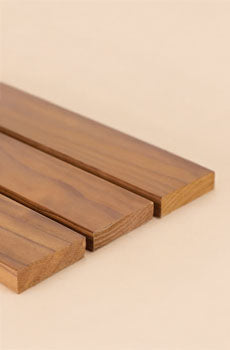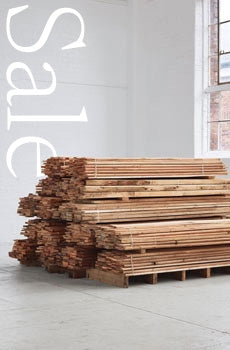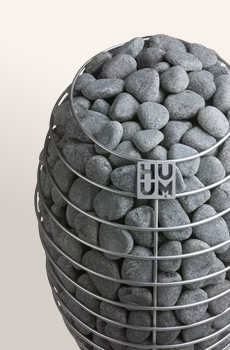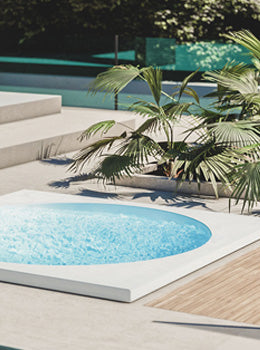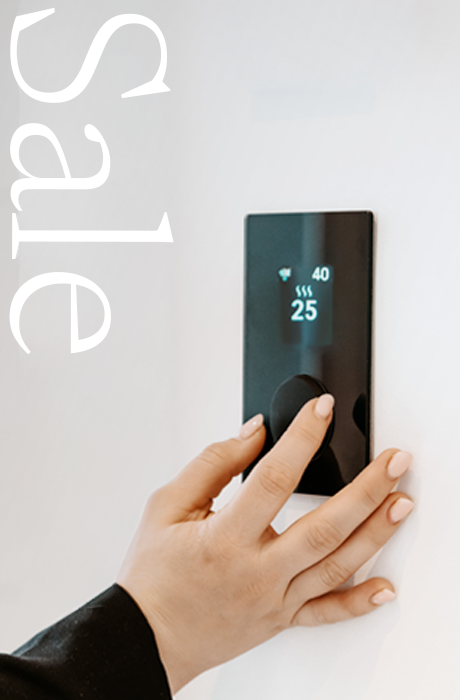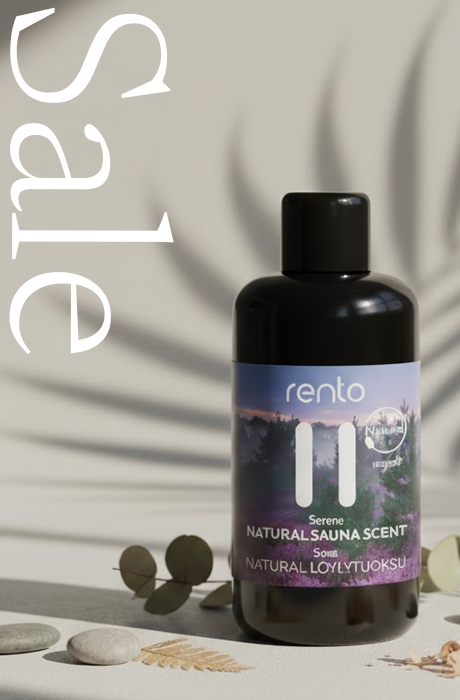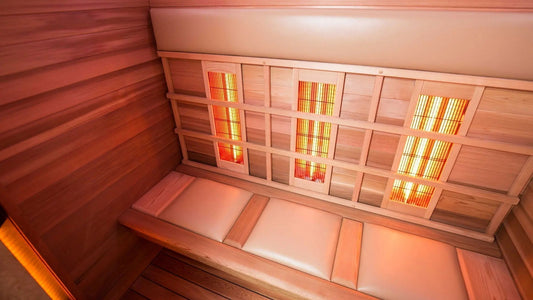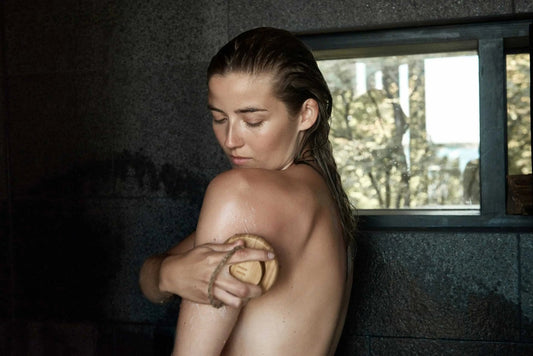
UK sauna regulations, and how to ensure you are getting the real thing when it comes to traditional Finnish saunas
The ‘traditional Finnish sauna’ is globally recognised for its ability to provide a truly authentic and high-quality sauna experience. In Finland the sauna has been one of the most important components of everyday life for thousands of years. As ‘the sauna capital of the world’ Finland boasts over 2 million saunas for its 5.3 million residents, and almost all Finns sauna bathe at least once or twice a week. It is no surprise then that as more people in the UK are realising the pleasure and wellbeing that can be gained from frequent sauna use, they look to the traditional Finnish sauna as the place to achieve this.

Unfortunately, there is one major difference between traditional Finnish saunas built in Finland and traditional Finnish saunas built in the UK, and that is the regulations governing their construction.
In Finland, sauna regulations are extensive and comprehensive, and as such, they form the backbone of the unique experience, quality, and longevity that makes Finnish saunas so impressive. In the UK sauna regulations are almost non-existent. This means that any company can market their products as ‘traditional Finnish saunas’ without actually adhering to any of the guidelines that make Finnish saunas what they are. The result of this is the Finnish sauna culture that has spent thousands of years being refined being poorly appropriated by untrained individuals who sell low quality, unsafe, and unpleasant saunas.
Being able to tell the difference between genuine traditional Finnish saunas and their poor, low-quality appropriations can however still be rather difficult – especially if you do not know what you are looking for. The simplest and most effective way to ensure you are getting an authentic Finnish sauna is to buy from companies that use only certified Finnish materials and adhere to Finnish sauna regulations, such as Finnmark. But if you are unsure there are things you can look out for in your sauna build to ensure you are getting high-quality service.
When comparing saunas there are eight main areas in design and construction you should be aware of; areas where the difference between genuine traditional Finnish saunas and their poor, low-quality appropriations can be distinguished. These are: battening, cladding, the heater, insulation, safety considerations, timber, vapour sealing, and finally ventilation.
Sauna Insulation
Insulation for saunas has two primary purposes: to help the sauna space heat up more quickly, and to protect the surrounding building from the sauna's heat. In general, there are two ways to insulate a sauna: fill the stud work with rockwool and cover this with aluminium sheets to vapour seal or use specially designed foil-backed insulation board.
The older and somewhat outdated method of using rockwool and aluminium sheets can often be extremely problematic and time-consuming. The aluminium used to cover the rockwool is very thin and delicate, making it very easy to catch and tear during installation and resulting in a lot of time spent taping up not only all the joins but all the tears as well.
When using this method, proper aluminium sheet paper should be used as opposed to the standard construction aluminium vapour barrier paper some sauna companies use. This is because construction aluminium vapour barrier paper is usually composed of either brown paper with bitumen and aluminium, or aluminium polyethylene and glass fibre – both of which will melt and fail when exposed to a sauna’s high temperatures.
Another drawback of using the rockwool method is that, in the case of sauna construction, thermal bridging will occur. This is because it leaves the spaces filled by the stud work uninsulated – resulting in cold points across the vapour membrane that gather condensation. It is for these reasons that Finnish companies, in general, do not insulate their saunas using this method and instead opt for the more modern and refined foil-backed insulation board solution.
Using specially designed foil-backed insulation board provides far better and more reliable results. Kingspan Sauna Satu is the most recognised and popular of these insulation boards and is designed specifically to retain its integrity in a sauna’s higher temperatures, meaning it will not degrade and release hydrogen cyanide like standard PIR insulation boards. Furthermore, its tongue and groove design means it can be secured directly onto the stud work. As such, once the joins have been taped up you are left with insulation which does not create any problems of thermal bridging along with an almost perfect vapour seal. Kingspan Sauna Satu is produced in large quantities for the Finnish market specifically for use in Finnish saunas. However, in the UK Finnmark remains the principal buyer and distributor despite many other sauna companies marketing traditional Finnish saunas.
Sauna Vapour Sealing
Vapour sealing is the primary barrier standing between the warm, wet air trying to escape the sauna and any wood beyond it at risk from mildew, mould, and rot. Because of this, Finnish sauna standards state that a sauna must contain appropriate vapor sealing. The UK however does not have these standards, and as such many ‘Finnish saunas’ are installed either absent of this vital aspect or with it improperly installed – quickly causing substantial damage to surrounding structures.
Aluminium sheet can make an effective vapour seal and is the product used most commonly to vapour seal in the UK. But it is important that proper aluminium sheet paper is used as oppose to standard construction aluminium vapor barrier paper for the reasons mentioned in the ‘insulation segment’ of this article. Still, aluminium sheet is very delicate and easily torn during insulation and, when used with rockwool, has the additional problem of thermal bridging when it comes to saunas.
As Finnmark builds saunas to Finnish building regulation standards, we use the same product used to vapour seal saunas across Finland and designed specifically for the job; Kingspan Sauna Satu polyisocyanurate (PIR) insulation board. As mentioned previously, this foil-backed insulation board works as both an insulator and vapour seal and will not break-down over time. It prevents thermal bridging from occurring by securing onto the studs as oppose to in-between them as aluminium sheet and rockwool does. This stops condensation from accumulating, out of sight, on the uninsulated sections of the vapour barrier.
Sauna Battening
Sauna battening, or counter battening as it is also known, is an important facet of sauna design with the dual purpose of creating a ventilation gap and allowing the drainage of condensation. The battens themselves are long, slim planks of wood which sit perpendicularly against the saunas cladding and separate it from the insulation and vapour barrier.

The gap this creates allows the drainage of any condensation accumulating on the cooler surface of the vapour barrier. This prevents any water from soaking into the saunas wooden cladding which, if left, would result in the wood warping out of shape and suffering from mildew and mould.
It is standard practice in Finland for indoor saunas to be installed with battening. As far as we are aware, Finnmark is the only sauna company in the UK to batten our cladding in its entirety, alongside installing a vapour barrier and proper insulation. We use only thermo treated battens which will not be affected by the heat of the sauna and, as such, are much more durable – able to survive for up to 25 years, compared to the usual lifespan of less than 5 for most timbers. We also use cladding that has a special design feature for when it is used for horizontally placed sauna battens. This unique cladding contains vertical channels to allow water to pass around the batten rather than sit upon it and soak into the wood.
We design our saunas with these battens because we feel it is important, when selling a Finnish sauna, to adhere to the standards of Finnish building regulations so as to provide an authentic installation that will stand the test of time. Many lower-quality companies, however, do not hold themselves to these standards.
Sauna Room Ventilation
A proper ventilation system is a key design principle of traditional Finnish sauna build, and it remains one of the most integral aspects of sauna construction. Its importance lies in its ability to maintain a constant source of fresh air into the sauna, ensure the hot air within the sauna is well circulated, and remove used air from the sauna before it becomes stagnant. It also ensures that any volatile or organic compounds entering the sauna air will be dispelled swiftly. Without this ventilation, the sauna air becomes stale, claggy, and potentially unhygienic, and the sauna itself can quickly deteriorate to become rotten and mouldy as excess humidity is unable to escape.
A traditional Finnish sauna, when installed properly, should contain a sauna ventilation system with at least three vents: One under the heater to allow fresh air channels to enter the sauna (this can be supported or even replaced by leaving a gap under the sauna door if it is in close enough proximity to where the heater is placed). One under the sauna bench around 400mm from floor level to help bring the heat down and prevent the stratification of hot air towards the ceiling. Finally, one near the ceiling to acts as a heat exhaustion outlet.
Any company that does not install functioning vents in their sauna, or install inadequate and ineffective ventilation, are not selling authentic quality-made Finnish saunas.

Sauna Cladding
The sauna cladding is the visible surface of the sauna’s interior (excluding the floor) and, in the case of traditional Finnish saunas, is almost exclusively constructed using timber. Finnish sauna standards state that cladding must be at least 14mm thick to ensure durability in the sauna environment. This is because the heat and moisture of the sauna can easily warp and shrink the thinner timber cladding and destroy both the saunas appearance and its usability in the long term.
Absent of these same regulations, sauna cladding available in the UK can frequently be found as thin as 10mm or 12mm. Cladding this thin will invariably result in warping of the wood, which is why Finnmark only supplies cladding which is at least 15mm thick in line with proper Finnish regulation standards. If a company selling traditional Finnish saunas is attempting to use cladding thinner than 14mm it means that they are not selling an actual Finnish sauna. They are not even selling a sauna made from Finnish cladding, as cladding this thin would not be manufactured for any sauna in Finland. Instead, they are likely sourcing it from cheaper and often environmentally unsustainable sources absent the safety nets and protections of true Finnish sauna regulations. Ultimately, if a company is attempting to sell you a Finnish sauna with cladding thinner than 14mm, then they either do not actually have the specialised knowledge needed to construct an authentic Finnish sauna, or else they are ignoring Finnish standards to reduce their costs at the expense of the sauna’s structural integrity and longevity.

Another cladding rule any sauna designer and/or installer should adhere to when constructing a traditional Finnish sauna (or any wet sauna for that matter) is the cladding- vapour barrier spacing. The cladding needs to be placed away from and not touching the vapour barrier. The reasons for this are twofold:
Firstly, this gap creates space for air to circulate behind the cladding and function in a supplementary manner to the insulation and vapour barrier. Secondly, without the gap any condensed air that reaches the vapour barrier will sit upon and soak into the wood of the cladding. The consequence of this second factor is the potential warping and cupping of the cladding boards, alongside damp and mildew. This problem, in particular, can compromise the integrity of the cladding as a whole. High quality and specially designed cladding, such as those supplied by Finnmark, will contain deep channels to allow any water accumulating on them to run down the board rather than settle upon it.
Sauna Timber Considerations
It can be difficult to decide which sauna timber is best to use and how to treat it, and often it is a matter of personal preference or financial limitations. However, that does not mean that any timber can be used with equal success. In Finland there are no materials or woods prohibited from use in sauna construction, but there are those that are favoured and those that are avoided. The most common reasons why certain timbers are favoured in Finnish saunas are suitability, sustainability, and availability. Unfortunately, such considerations are often absent in UK sauna builds despite their importance to ensure the resulting product is an authentic Finnish sauna.
Spruce and pine are both common timber materials used in sauna construction because of their cheapness and availability, however, these are not ideal because both weep molten resin when exposed to high temperatures. Alder and aspen are far more suitable timbers for sauna construction, especially if thermo treated to ensure stability and durability in the sauna atmosphere and prevent movement and cracking. Both can be found growing across Finland and as such are popular choices for many Finnish saunas. Cedar is also suitable but is used less frequently in Finland because it must be imported.
Sourcing these woods from Finland, as Finnmark does, not only ensures that a company is selling an authentic Finnish product, but it also ensures sustainable and environmentally conscious timber practices are used. This, unfortunately, is not the case for many UK companies who state they are selling traditional Finnish saunas but are actually sourcing their materials from countries such as China or the DRC (Democratic Republic of Congo).
Sauna Heater
In a traditional Finnish sauna heater, it is expected that there will be a lot of room for stones and that these stones can have plentiful amounts of water poured onto them at the sauna bathers’ discretion. The rule of thumb in Finland is ‘the more stones, the softer the steam and the more pleasant the heat’. Without this, the distinctive löyly (pronounced 'low-lou', meaning sauna steam or sauna atmosphere) of an authentic Finnish sauna experience cannot be achieved. Some heaters, for example those in the saunas of the Finnish Sauna Society, will have as much as 1 tonne of stones for their heaters specifically for this reason.
However, many non-Finnish sauna producers do not take this into account when installing a heater. There is often only a small cavity with a thin layer of stones. This is also usually the case when the heater itself is hidden – something in and of itself not permitted in true Finnish saunas. The effect of having fewer stones is a much sharper and uncomfortable heat, instead of the soft and pleasant heat gained from using a thick layer of stones in true Finnish style.
Secondly, the heater itself or the surrounding structure is often not adequately protected from water damage and, as such, customers are told not to throw water onto it, or else it is hidden so that sauna users cannot reach it. Unfortunately, this problem has led to many people believing the misnomers that Finnish saunas are dry and/or electric heaters cannot have water poured onto them. This is the opposite of how a true traditional Finnish sauna should be used, and any Finnish sauna heater that cannot have water thrown onto it is not fit for purpose.
If you are looking for a good quality and reliable sauna heater, authentic wood-burning and electric sauna heaters made by Finnish brands such as Narvi, Aito and Kota lead the market in terms of build quality and stone capacity. More than this, they bear the Finnish ‘Key Flag’ symbol and are CE marked; identifying them as products that have been manufactured in Finland, and which meet the health, safety, and environmental protection standards for sale within the European Union.
Looking out for the Finnish ‘Key Flag’ symbol is an excellent way to make sure you are getting the real thing when it comes to Finnish products and services regarding your sauna. Many companies selling ‘authentic Finnish products and services’ will actually have the vast majority of their production taking place in cheaper countries with fewer or even non-existent regulations, with only one tiny detail being added in Finland (if any). The Key Flag symbol combats this problem by being a reliable indicator that the product has gone through at least 50% of its production in Finland – although the average amount for Key Flag products is actually over 80%. If the heater, or indeed any product, you are purchasing has this symbol then you can be confident that it is a real Finnish product, created with the high standards and strict regulations that make true Finnish saunas so impressive.
Safety considerations
The defining characteristic of ‘common law’ – the legal system used by England – is that it arises as precedent. This means that that newly introduced and/or popularised areas can go a long time without adequate protective legislation. Unfortunately, this is a category that UK sauna construction falls into.
Finland’s laws regarding sauna safety and construction are far more comprehensive than the UK’s owing to their far longer and more frequent use of saunas. These laws include important safety consideration which are often not considered by UK builders or designers who are untrained for sauna builds.
The main safety considerations when building a sauna in the UK that is not currently covered by building and electrical safety regulations is; proper ventilation, the opening direction of the door in the sauna, and the thickness of any glass which may be used for a door and/or wall.
Proper ventilation is not only vital to ensuring an enjoyable sauna environment, but it also prevents light-headedness and nausea by removing stagnant air from the sauna whilst ensuring a continuously fresh source of air. Unfortunately, it is also one of the aspects of sauna construction most frequently overlooked in low-quality installations. Because of this problem, we have created a separate guide to give a brief but comprehensive overview of how to ensure proper sauna ventilation to Finnish sauna standards. [coming soon].
By extension of the dangers created by poor ventilation it is vital that when installing a sauna door, it is fitted to open out from the sauna rather than inwards into the sauna space. This is so that if a person loses consciousness or collapses whilst in the sauna, they will not run the risk of blocking the door and preventing other people from entering or themselves from leaving.
Additionally, if a door or wall is made from glass it is imperative that the glass itself is at least 8mm thick to prevent it from breaking upon impact if a person were to fall into or against it. In the case of double-glazed glass, it is also important to use silicone sealed units as opposed to butyl sealed units to avoid the seal breaking down and perishing.
Any other Questions?
If you have any other questions, please do get in touch through the Contact Finnmark page. You can also send us an email info@finnmarksauna.com or call us on +44 (0) 1768 489273 (UK North) or +44 (0) 20 8050 2895 (UK South). Don’t delay, get in touch today!
If you're looking at building your own sauna, Finnmark can fully assist DIY builds. We offer a free consultation, and will even assemble a basket of build components free of charge.
The UK's Experts in Finnish Saunas
Recognised across the UK for uncompromising sauna craftsmanship, Finnmark has delivered thousands of projects - private and commercial alike. We bring real on-site experience, technical precision and an intuitive grasp of sauna performance to every space.
